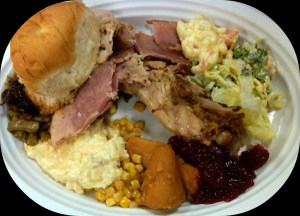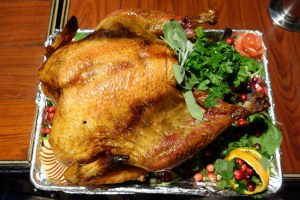It’s good to get away, and sometimes it doesn’t seem to matter where the journey takes us; it’s the break from routine that’s important.
This time, though, it was all about the place. My husband and I, as those who know us (and those of you who read the previous post) know, spent the better part of a summer in Alaska 13 years ago. We traveled the Marine Highway of Southeast Alaska and numerous watery byways that led us to out-of-the-way villages and secluded coves. We went north to Skagway and Haines, west to Glacier Bay and Sitka, spent delightful days in Hoonah and Petersburg and bobbed gently “on the hook” with only stars and lapping waves for company. We visited Juneau, the capital, several times, and we had good times in Ketchikan, Alaska’s “first city.”
At the end of August we returned to the 49th state, arriving in Anchorage on a Friday evening to spend a few hours prior to embarking the next day on a seven-day voyage aboard Golden Princess. The trip would take us past impressive Hubbard Glacier and into Glacier Bay before visiting Skagway, Juneau and Ketchikan on a journey slated to end in Vancouver, British Columbia, the following Saturday morning.
It was not a trip we spent a lot of time planning. It was, in fact, a snap decision, made with a “why not” attitude, but with low expectations. We sandwiched it in between short trips to other destinations during August.
Some initial observations:
What we experienced surprised us. We were less than enamored by Anchorage, home to fully 40 percent, if not more, of Alaska’s residents. But, to be fair, we spent only a few hours there and during our brief visit we encountered delightful people. The city, however, is not pretty, apart from its surroundings.
Our appreciation for the spectacular natural beauty of Alaska emerged fully intact. Looking down on the Anchorage area from our airplane and seeing snow-capped distant peaks towering above the clouds was duly impressive. The water and the coastal vistas are incredible and the vast land seems to extend forever.
And the flowers — before I visited Alaska, I would not have believed there were flowers in what I considered a cold and desolate place. How wrong I was. They were — and still are — everywhere. Wild flowers and flowers in public parks; flowers on window sills and in shops, flowers filling huge municipal planters; flowers in airports and on the docks. Wildflowers along the highway. Gorgeous, colorful flowers. Everywhere!
On Saturday, we boarded a bus for the short drive to Whittier, a year-round deep-water port at the head of Prince William Sound. The trip allowed us a glimpse of white Beluga whales in the waters of Turnagain Arm and a herd of Dall sheep navigating a craggy bluff on the other side of the highway.
It’s exciting, to be sure, to wear jackets and knit caps in August, even if we did have to don rain gear as well. We visited the Alaska Wildlife Conservation Center to see wood bison and musk ox, wolves and porcupines, bear and moose, deer and foxes.
We continued on through the engineering marvel of a tunnel that gives the only land access to Whittier. It is shared (on a one-way basis) by passenger vehicles, buses, trucks and the train!
A floating city . . .
Once aboard, we began to settle in to the life of a floating city with 2,600 other people — not difficult, actually, with the wealth of activities and the pleasant mix of public and private spaces. Every day seems a celebration on board a modern cruise ship.
What we knew we would miss was the feeling of being close to the water — the sound of the waves, the experience of cold fingers and blasts of wind as we dropped anchor or secured the lines of our vessel to the metal cleats of well-worn wooden docks. We missed the camaraderie we felt with fishing boat captains as they put away their gear after a long day; and we missed the hot coffee and good conversation that was always available in cluttered dockmasters’ offices.
We also missed seeing whale spouts and fish jumping just above the swells, gulls and eagles trailing fishing boats and circling above small docks, the occasional family of sea otters looking for refuge in a marina, and eye-level contact with those splashing waves and floating chunks of ice. Looking down on the water from a deck 70 or more feet above it, or searching for native wildlife through binoculars and behind protective glass has nowhere near the same effect.
This slideshow requires JavaScript.
What we enjoyed was the companionship of other passengers, especially our delightful dinner tablemates, talking with fellow travelers from not only other states, but from Australia and New Zealand, from Germany and England, from Mexico and from Asia. We appreciated the perfectly prepared fresh fish and seafood that was offered at every meal, the smiling service of bartenders and waiters, the helpfulness of the crew, the variety of outdoor deck space from which to view changing vistas of glaciers and icebergs, mountains and clouds.
We were blessed with sunshine for at least a part of every day, somewhat unusual for this part of Alaska.
We also appreciated having the assistance of other eyes to help spot whales and otters, eagles, bears, seals and porpoises. And, yes, we did spot some, although we yearned to see more! The ship reverberated with a chorus of delight for each occurrence. We were thrilled once again to visit Glacier Bay. The naturalists and Park Rangers who came aboard were interesting and knowledgeable. It was a learning experience, and it was good to have their input.
We heard the “thunder” of glaciers as they calved, and realized anew that listening to the natural sounds of Alaska is mesmerizing.
‘Tis the season . . .
We could have done without the proliferation of t-shirt and key chain shops, furriers and jewelry stores, harborside kiosks and lines of tour buses and waiting guides. But then we realized that they were very much a part of port life 13 years ago as well.
As Alaska residents acknowledge, the season is short and it’s tourism that turns the wheels of commerce in the ports of Southeast Alaska. Life after October settles back into familiar patterns and the majesty of the land becomes once again the personal domain of those who call Alaska home.

OLYMPUS DIGITAL CAMERA

OLYMPUS DIGITAL CAMERA
Travel is enlightening in many ways. But it’s not the places; it’s the people one meets.
We sought out those people on this trip. And we were rewarded tenfold! Friendly residents are more than willing to talk about their lives, their cities, their families and their experiences. As always, we were fascinated to learn about daily life as it is lived outside the pages of guidebooks.
We always asked for local recommendations for food. In Anchorage, we were directed to a popular local brew pub, and were immediately befriended by a local resident only too willing to share his views on everything from oil drilling to recreational cannabis, from the Northern Lights to politics. The next morning we had cafe au lait and warm croissants at the charming Paris Cafe, a short stroll from our hotel.
In Skagway, there was a wait at “the best place in town to eat,” but the wait was worth it — and we were notified by text message when our table was ready. Skagway may be small and remote, but there’s no shortage of technology! 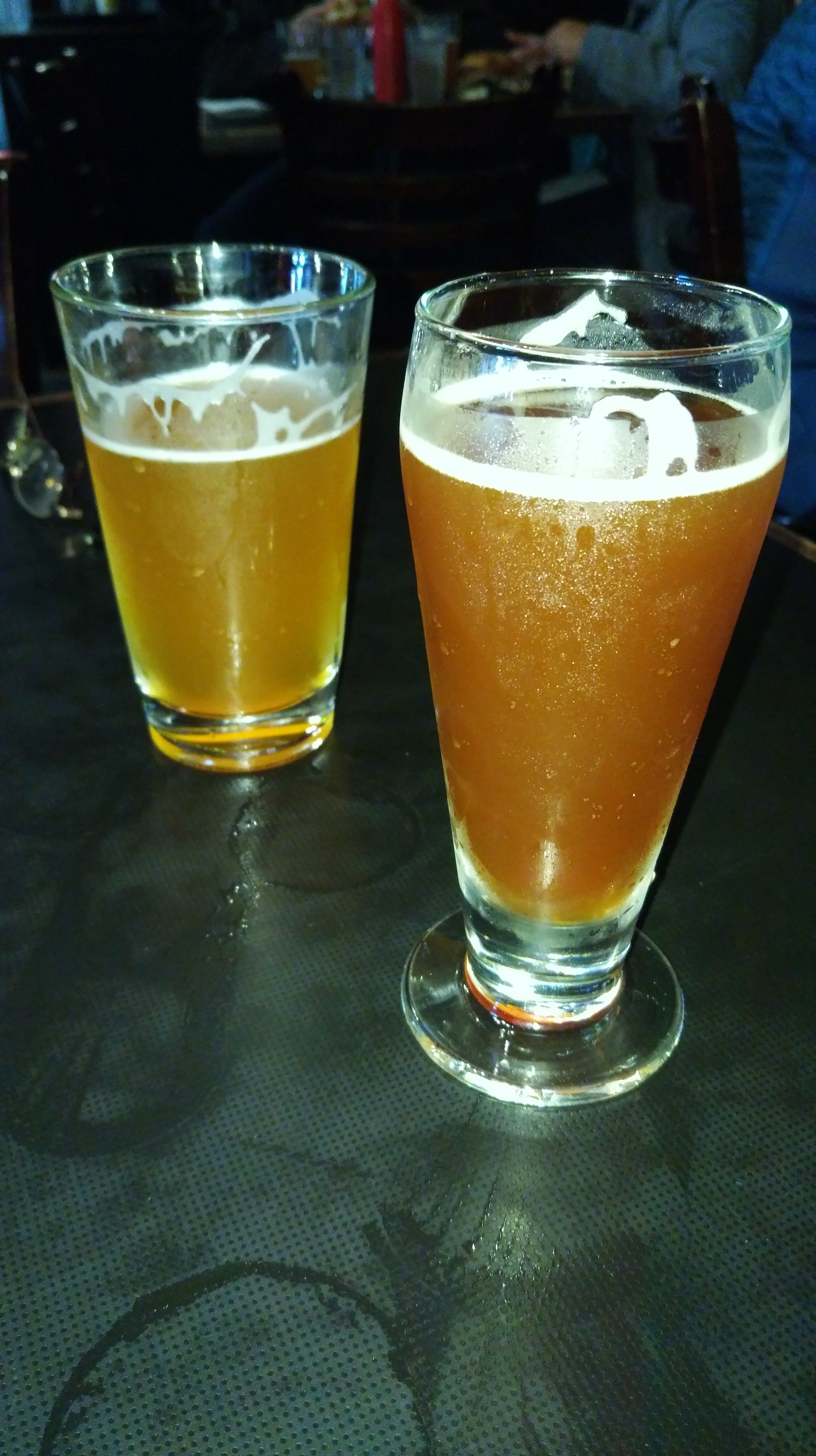 We were rewarded with perfectly prepared fish, crispy chips and superb local brew.
We were rewarded with perfectly prepared fish, crispy chips and superb local brew.
We took a short bus ride to White Pass, following the path traversed by miners with gold fever, and snapped photos at the border between the United States and Canada, “Gateway to the Klondike.” We walked around Skagway for just a short time before retreating back to our ship as it began to rain. Skagway has changed little, but with four cruise ships in town, it was crowded!
That afternoon, before slipping lines and heading south to Juneau, a program by “real Alaskan” Steve Hites, one of the 1,057 full-time Skagway residents, was a highlight of the trip. Accompanied by guitar and harmonica, the 64-year-old songwriter, storyteller and tour operator charmed listeners with a 40-minute history of “his” Alaska, and the small town he knows so well.
In Juneau and Ketchikan, once again we asked for local food tips and were given the names of two eateries slightly beyond the tourist mainstream. At both, The Flight Deck in Juneau, and again in Ketchikan at The Dirty Dungee, we devoured fresh-caught Dungeness crab, and couldn’t have been happier!
About traveling to Alaska . . .
My heartfelt advice to anyone considering an Alaska cruise?
GO!
My husband and I realize that we were privileged to be able to experience the state as we did — on our own — and that trip will remain in our hearts as a unique experience.
We remember how small we felt while on our boat, especially one morning in Juneau as we awoke to the presence of a massive cruise ship snuggled against the dock directly in front of our vessel.
 As luck would have it, on this trip Golden Princess occupied that slip, and we wondered if the private yacht owners felt as dwarfed as we had that long ago morning.
As luck would have it, on this trip Golden Princess occupied that slip, and we wondered if the private yacht owners felt as dwarfed as we had that long ago morning.
The allure of Alaska has not diminished for us. We shared the excitement of first-time visitors on this cruise. And we understand clearly the sentiments of those who return again and again. There are many ways to travel to this unique state, from “big-ship” cruises to private vessels, land-sea combos, fly-in fishing or sightseeing trips and active expedition cruises. The Alaska State Ferry runs north from Bellingham, Wash., year round, and the Al-Can Highway provides an unparalleled opportunity for those who love road trips. There are summer work opportunities for college students, and the tourist industry brings part-time residents every season. There is no one-size-fits-all recipe for visiting Alaska.
Absolutely, go to experience the place — the stunning scenery with majestic peaks and pristine water, the wilderness, the waterfalls and the icy blue glaciers. Look for wildlife, of course, and marvel when you spot a whale or a group of bears on shore, eagles in the trees, or otters in the sea. Eat your fill of freshly-caught fish and seafood. Snap Selfies. Take tours. Buy trinkets.
But go especially to meet the people! Dinner companions often become lasting friends. At the very least, casual encounters with shopkeepers, restaurant servers, tour guides, ship’s staff, and the people you stop to talk with on the street linger as lasting reminders of the trip even when memories of specific sights begin to fade.
Cruising is invariably a pleasure, no matter what the ports. And Alaska still lives up to its moniker as the American “last frontier.” It’s a big adventure!
So, yes, go to Alaska!
Will we return? Perhaps not. But we would not hesitate to do so. It’s that good!









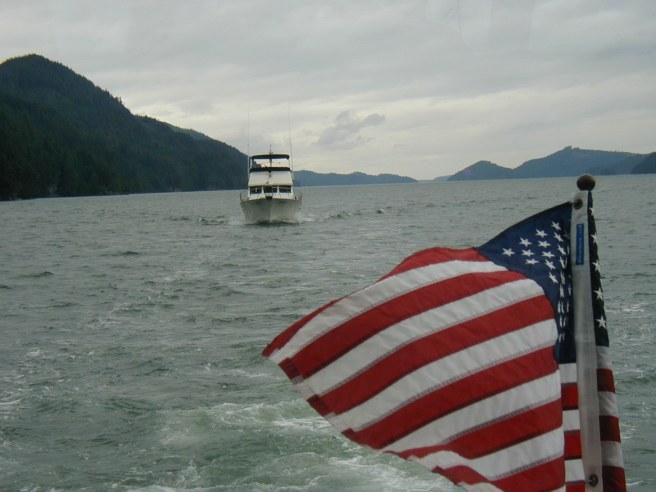
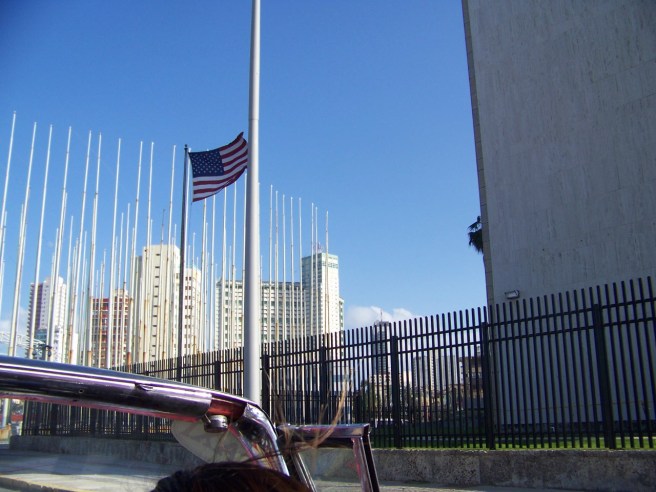






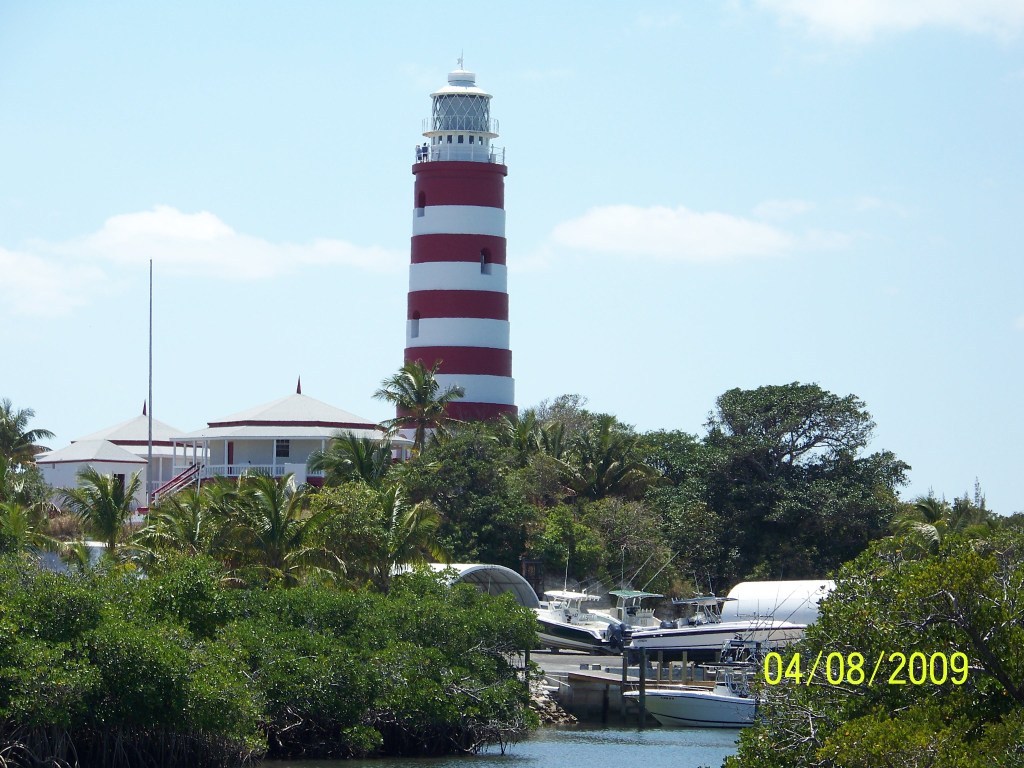

































 We were rewarded with perfectly prepared fish, crispy chips and superb local brew.
We were rewarded with perfectly prepared fish, crispy chips and superb local brew.



 As luck would have it, on this trip Golden Princess occupied that slip, and we wondered if the private yacht owners felt as dwarfed as we had that long ago morning.
As luck would have it, on this trip Golden Princess occupied that slip, and we wondered if the private yacht owners felt as dwarfed as we had that long ago morning.
















 The unique buoy and an oversize flagpole brought home to us that year the reality of the battle that shaped the destiny of a young nation. History is like that — it sometimes takes being there to make it real.
The unique buoy and an oversize flagpole brought home to us that year the reality of the battle that shaped the destiny of a young nation. History is like that — it sometimes takes being there to make it real.

 Then we clung to the seacoast to reach Camden, where Mount Battie stretches to the sky along one side of scenic Route 1 and the surf crashes against the rocks on the other side.
Then we clung to the seacoast to reach Camden, where Mount Battie stretches to the sky along one side of scenic Route 1 and the surf crashes against the rocks on the other side.

 We even found ice cold Moxie for sale by the bottle. Yes, it still has a medicinal taste, but apparently it has never lost its appeal.
We even found ice cold Moxie for sale by the bottle. Yes, it still has a medicinal taste, but apparently it has never lost its appeal.




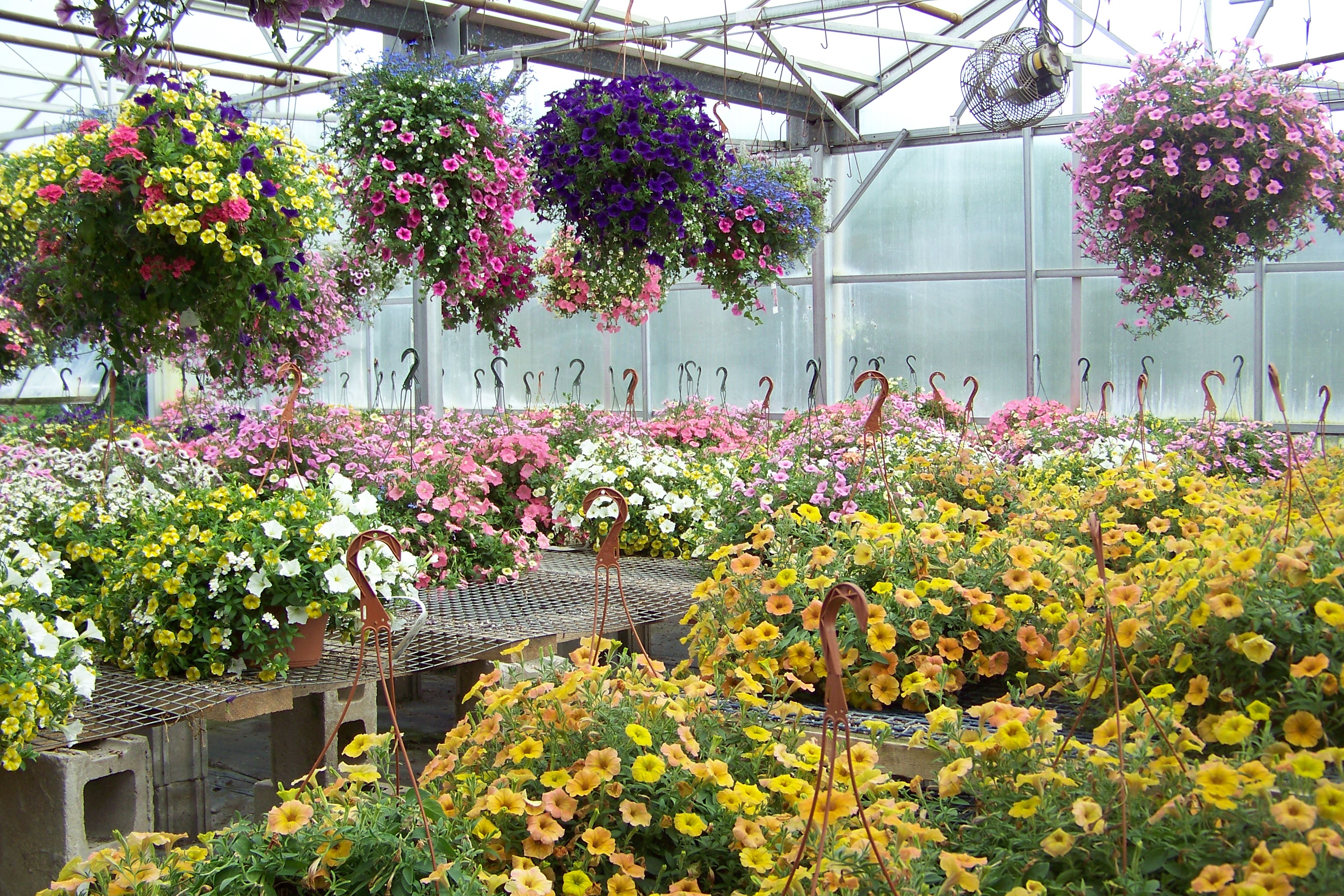 center today, full of fine restaurants, hotels, shops, museums and galleries.
center today, full of fine restaurants, hotels, shops, museums and galleries.
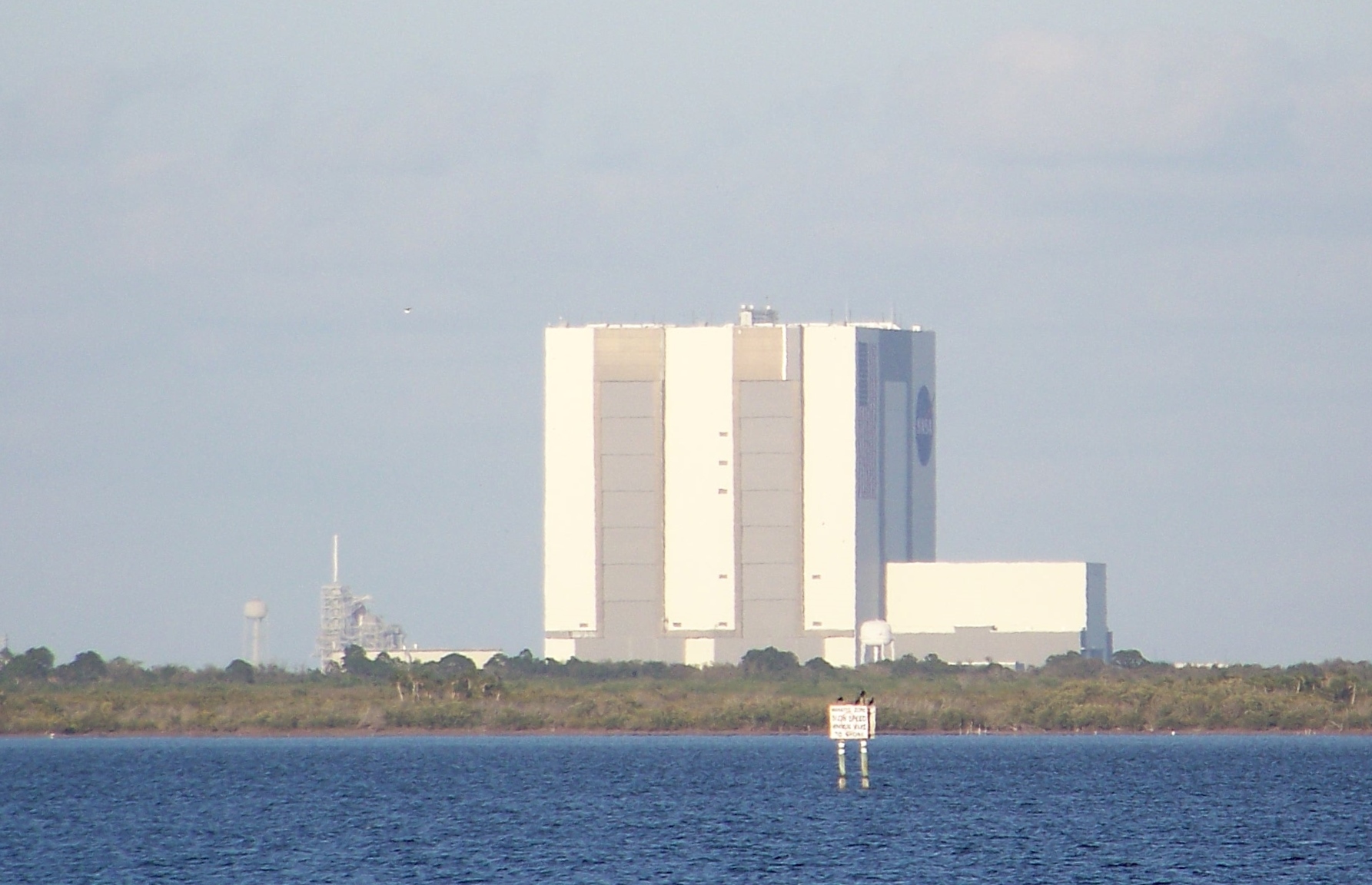

 A moment in time
A moment in time

